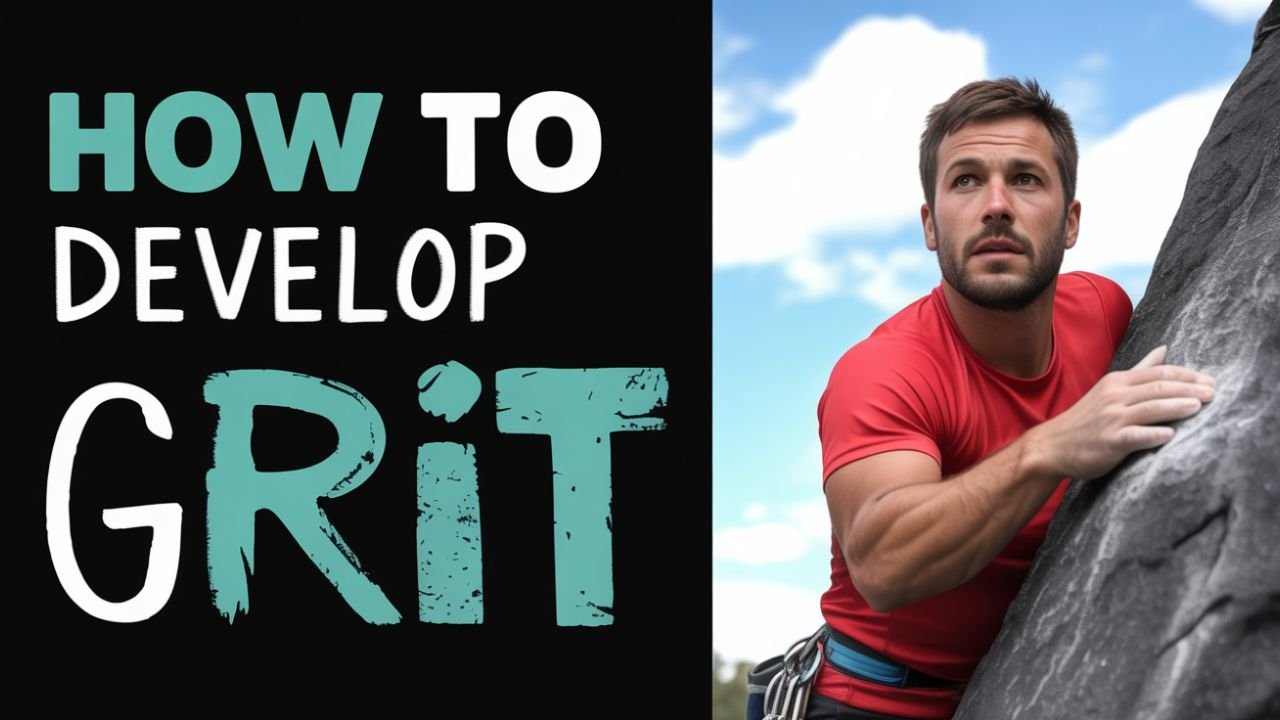How to Develop the Six Types of Grit for Success: Everyone wants to be better in life – braver, stronger, more disciplined today than they were yesterday. But the path is not easy. It often pushes us beyond our limits, picks us up after failure, and demands us to stick to our goals.
This constant effort and patience is what we call “Git” or perseverance. Psychologist Angela Duckworth defines it as – “a combination of enthusiasm and perseverance.” But is that enough?
Performance expert Steven Kotler has explained in his book The Art of the Impossible that git is not just a quality, but a whole system divided into six different types, which we have to develop in different ways.
Let’s know these six forms of git and also how they can be adopted in our life.
1. Perseverance to stay even in difficulties
This is the most common form of git – to keep working continuously towards a goal, no matter what the circumstances. According to Kotler, this type of git is made up of three main psychological qualities: willpower, mindset, and passion.
✦ How to increase willpower?
Willpower means self-control. Do the most difficult work in the morning, so that your mental energy is maximum. Reduce the number of decisions – bring habits, systems and routines into your daily routine. Also, do difficult tasks every day — like using your opposite hand, or pushing yourself into unfamiliar tasks.
✦ Develop the right mindset
Psychologist Carol Dweck explains that there are two types of mindsets — fixed and growth. People with a growth mindset believe that everything can be learned through hard work. Think back to your old skills, and think about how you learned them — this thinking will build your belief in the possibility of growth.
✦ Identify passion
Discipline alone is not enough, passion is needed to put soul into it. According to Kotler, “Passion is what is born of curiosity.” The things that you do without realizing the time are the direction of your passion. Choose goals that you are naturally interested in.
2. Perseverance to control thoughts
Our biggest critics are sitting inside us – our own negative thinking. These thoughts fill us with fear of failure, and we give up.
✦ How to overcome these thoughts?
- Replace negative thoughts with positive ones: Change your thinking from “I can’t” to “I am learning.”
- Practice gratitude: Adopt the Japanese method “Naikan” — in which you think about who did what for you and what you did for others.
- Practice meditation: Mindfulness meditation helps you recognize the gap between your thoughts and feelings. In that gap, you can make informed decisions instead of reacting.
3. Perseverance to overcome fear
Big dreams come with big fears. But fear is not an enemy, it can also be a compass — telling us which way we should go.
✦ How to deal with fear?
- Expose yourself to challenges over and over again.
- Feel the physical symptoms of fear, but don’t react to them.
- Embrace fear as excitement and energy.
Fear, if embraced correctly, can become our greatest weapon to unleash our potential.
4. Perseverance to be your best even at your worst
Kotler says a real git is “giving your best performance even when you’re at your weakest.” This quality differentiates average people from elite performers.
✦ Train yourself in difficult situations:
- Keep practicing even when you feel tired, sick, or lazy.
- Deliberately put yourself in more difficult situations so that the real fights seem easier.
The training of Navy SEALs, rehearsing by climbing a hill before a speech, or preparing for a marathon in the heat — it’s all based on this principle.
5. Persistence to improve weaknesses
It is often said to focus on strengths and ignore weaknesses. But if you want excellence, it is imperative to face your weaknesses.
✦ Identify your weaknesses:
- Ask your friends, colleagues what are your three biggest weaknesses?
- Find commonality in the answers and focus on improving one point.
- Accept that improvement will be slow — it may take months, years.
This process is difficult, but it is the key to unlocking your full potential.
6. Persistence to rest and reset
This type of git is the most unique — taking a break. Yes, you read that right. Sometimes the hardest thing to do is to stop, slow down and recharge.
✦ Practice active recovery:
- Instead of watching TV, do something that really refreshes you — like going for a walk, meditating, taking a hot bath.
- Make sleep a priority. Deep, full sleep refuels your mental and physical guts.
Keep in mind, running around without breaks will tire you out.If you want to be a long-distance runner, rest in between is a must.
Conclusion: Build perseverance, change lives
Git is not a single virtue — it is a complex but essential lifestyle. Willpower, thought control, overcoming fear, believing in yourself in bad times, working on weaknesses, and proper recovery — all these different types of git lead us to become a better person.
Every day, every challenge, and every failure is an opportunity for you — to strengthen these virtues. So the next time you are about to give up on yourself, pause for a moment… and remember, Perseverance is your real strength.
